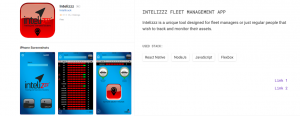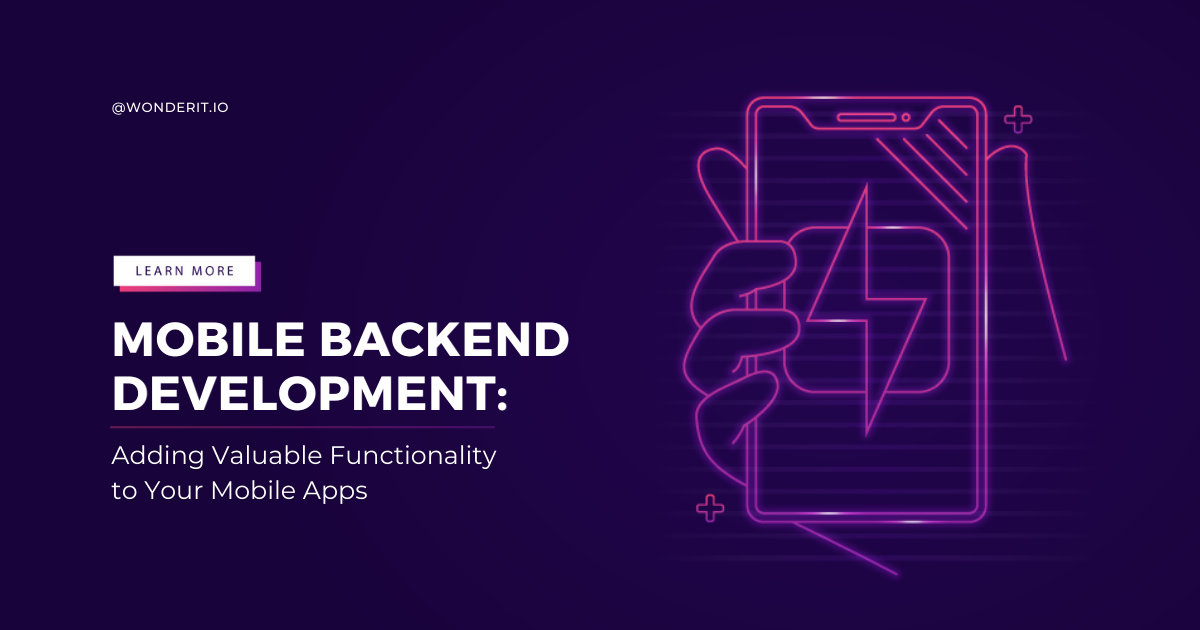Mobile applications have become an essential part of our daily lives. With the rise of mobile devices, there has been a significant increase in the number of mobile applications developed to cater to various needs. However, developing a mobile application is not just about designing a great user interface and user experience. The real magic happens behind the scenes, in the backend development of the application.
WonderIT comprehends the significance of mobile backend development and provides various services to assist our clients in constructing a strong backend for their mobile applications.
In this blog post, we will discuss the importance of mobile backend development and how it can power your mobile app with robust functionality.
What is Mobile Backend Development?
Mobile backend development refers to the process of developing the server-side logic of a mobile application. It is the foundation that powers the entire mobile application, enabling it to interact with the server, perform complex operations, and store data securely. A well-designed backend system can help mobile applications to run smoothly, securely, and efficiently.
Mobile backend development includes the following components:
- Server-side logic: This includes the programming and scripting that makes the mobile application run smoothly. It involves designing the application’s architecture, database schema, and API endpoints.
- Application Programming Interface (API): An API is a set of protocols that enables different software applications to communicate with each other. In the context of mobile backend development, an API is used to allow the mobile application to interact with the server.
- Database: A database is a system that stores and manages data. In mobile backend development, the database is used to store data securely and efficiently.
The Importance of Mobile Backend Development
Mobile backend development is essential for creating mobile apps that are both functional and scalable. Without a robust backend, your app may not be able to handle a large number of users or store and retrieve data efficiently. A well-designed backend can also improve the user experience by enabling features such as real-time updates and push notifications. Here are some of the reasons why mobile backend development is important:
- Scalability: With mobile applications becoming more popular, it is essential to develop a backend system that can scale easily as the number of users grows. A scalable backend system ensures that the mobile application can handle a large number of requests and provide a seamless user experience.
- Security: Mobile applications deal with sensitive data such as user credentials, payment information, and personal data. A robust backend system ensures that data is stored securely, and user privacy is protected.
- User Experience: A well-designed backend system can significantly enhance the user experience of the mobile application. It can enable faster data retrieval, provide real-time updates, and allow for personalised content.
- Cost-Effective: Mobile backend development can significantly reduce the cost of developing a mobile application. A well-designed backend system can reduce the amount of code required for the mobile application, resulting in lower development costs.
Mobile Backend Development : Best Practices
Mobile backend development requires careful planning and execution to ensure that the app functions correctly and provides a seamless user experience. Here are some best practices for mobile backend development:
- Choose the right technology stack: The technology stack used for mobile backend development plays a crucial role in determining the app’s functionality and performance. Developers must choose the right technology stack based on the app’s requirements and the development team’s expertise.
- Use RESTful APIs: RESTful APIs provide a standardised approach to data exchange between the client and server.
- Implement robust authentication and authorisation mechanisms to ensure data security.
- Use cloud services for better scalability, flexibility, and cost-effectiveness
- Implement robust testing and deployment processes to ensure a smooth and seamless user experience.
Case Study: Improving Backend Services for Intelizzz Asset Recovery Device
Introduction:
Intelizzz is a stolen asset recovery device that uses GPS tracking to transmit its location and receive instructions. The device is battery-operated and wireless, making it difficult for criminals to detect. To support the device’s functionalities, Intelizzz needed a robust backend service that could handle large amounts of messages sent from GPS tracking devices, such as their position, stationary state, and battery level. Keep reading to find out how WonderIT helped Intelizzz improve their backend services.
Challenges:
Intelizzz faced challenges in handling large amounts of data sent from GPS tracking devices. The company needed a backend service that could handle data transmission and enable bi-directional communication with the device. The backend service should also support device commands such as restart, turn off, or toggle the alarm.
Solution:

To address the challenges faced by Intelizzz, our company developed a custom backend service that could handle large amounts of data transmission from GPS tracking devices. The backend service was designed to enable bi-directional communication between the device and the backend, allowing the device to receive commands from the backend. The backend service was built on a microservices architecture, which divided the backend into smaller, independent services. This approach improved the scalability and flexibility of the backend service, enabling faster feature deployment and minimising downtime.
Results:
After implementing the new backend service, Intelizzz saw significant improvements in device performance and data transmission. The backend service allowed for bi-directional communication between the device and the backend, enabling real-time updates on the device’s location, stationary state, and battery level. The backend service also allowed for the execution of device commands such as restart, turn off, or toggle the alarm.
Moreover, WonderIT designed and hosted mobile and desktop applications for both IOS and Android devices that came naturally with Intelizzz, making it easy to manage the devices through the app.
Conclusion:
Intelizzz’s asset recovery device required a robust backend service to support its functionalities. WonderIT’s development of a custom backend service allowed for large amounts of data transmission from GPS tracking devices and enabled bi-directional communication with the device. The use of microservices architecture improved the scalability and flexibility of the backend service, resulting in significant improvements in device performance and data transmission.
FAQs
- What is the difference between mobile frontend and mobile backend development?
Mobile frontend development refers to the process of creating the user interface and user experience of a mobile app, while mobile backend development refers to the process of creating the server-side logic and functionality that powers the app.
- What are some of the benefits of mobile backend development?
Mobile backend development can provide several benefits, including seamless integration with third-party services, real-time data processing and analytics, and robust security features.
- How does mobile backend development improve app performance?
Mobile backend development can improve app performance by minimising server response times, reducing app loading times, and minimising network usage.
Wrapping up
Mobile backend development is a crucial aspect of developing a mobile application that provides robust functionality and a seamless user experience. A well-designed backend system ensures scalability, security, and cost-effectiveness.
At WonderIT, we have extensive experience in developing mobile applications with robust backend systems. Contact us today to learn more about how we can help you develop a mobile application that meets your business needs.


Recent Comments